I wrote almost all of this piece in late 2010, right after I finished playing Super Mario Galaxy 2. I never quite finished it, though, and soon it found its way into a folder, which eventually was put into another folder, which thereafter was dropped into some other folder inside a folder. This is not a successful writing strategy!
David Smith linked two days ago a great video by Shaun Inman about the behavior of the camera in Super Mario World. The video got me thinking about how there’s traditionally been a ton of care put into Mario games, which in turn reminded me of this post. So I’m dusting it off.
It’s been two years since I played Super Mario Galaxy 2, so a lot of the details of the game are now pretty hazy. However, I can still run through almost the entirety of the Slimy Spring Galaxy in my head.
And, since I wrote what’s below, I’ve replayed Super Mario 64.
Spoiler alert: this post contains details of level design in Super Mario Galaxy 2, focused mostly on a thoroughly illustrated description of the Slimy Spring Galaxy in world 6. If you haven’t played the game and don’t want the level spoiled, then don’t read this post! Otherwise, feel free to proceed. I recommend it; I feel this is something special worth talking about.
I haven’t played Super Mario 64 in a few years, and I feel I’m about due for a replay.
The game is one of the first games I owned, so I hold a lot of nostalgia for it. It’s also one of the first 3D games I ever played, so in some ways it established a model for me for how 3D platformers are supposed to be. In particular, I’ve always enjoyed ones which incorporate a fair degree of exploration into the levels.
The openness of Super Mario 64‘s levels is a departure from the more linear style of the 2D games’ levels: keep going until you reach the goal, occasionally taking side trips or alternate routes. SM64‘s main levels, in contrast, are places with things to see, people to talk to, and stars to discover. The difference in philosophy can be seen in the minor levels, like the cap and Bowser stages, which more reflect the obstacle course heritage of the 2D games. In these levels, there’s a definite goal and one direction to get there, with platforming challenges along the way.
Super Mario 64‘s emphasis on exploration was influential on future 3D platformers, like Rare’s Banjo-Kazooie and Donkey Kong 64, and Super Mario Sunshine had a similar design philosophy, but Super Mario Galaxy moved away from it. In SM64, when you choose a star at the start of one of the main stages, you’re never forced to get that star. You can wander around the stage at your leisure and pick up one of four or five other stars if you feel so inclined. When you choose a star in Super Mario Galaxy, however, the level changes to lock you into a path to that star. These different paths start in the same place but usually diverge into completely different areas, making routes in the same stage feel like different ministages.
The galactic motif of Super Mario Galaxy also adds to that feeling by breaking stages up into planets. While all of the stages of Super Mario 64 are single places, SMG‘s stages (“galaxies”) are often collections of smaller sublevels (“planets”). This clever design mechanic allows stages to have a wide variety of challenges without sacrificing too much in the way of consistency, since there isn’t much consistency in a galaxy of planets to begin with.
An interesting result of these design choices is that there’s more freedom in framing the “scenes” of the game, as it were. The linearity and disjointedness of the levels allows them to be cut into segments which can have different themes and camera behavior. Sidescrolling areas fix the camera perpendicular to the plane of action, so it looks as though you’re playing a 2D game. A planet can be shaped like a cake or another wacky object, and the game will focus just on that area as you play it, making it less off-putting than it would be if that cake were on a mountainside or other unified area. Playing Super Mario Galaxy at times feels like playing through a series of well-choreographed scenes.
Super Mario Galaxy 2 and Striking Imagery
Super Mario Galaxy 2 uses the same design approach as Super Mario Galaxy (even more so), but on several occasions it does something I don’t recall the first game ever doing: there are a few places in the game designed with an image in mind, framing a scene around it. The series of Mario platform games overall doesn’t have too much arresting imagery during gameplay, aside from some impressively large structures here and there. SMG2 sneaks some into a few of its levels.
A neat example comes in the first star of the Boo Moon Galaxy, “Silver Stars Pop-Up.” The first scene of the level introduction is centered on a crescent moon, slowly zooming in on it through a hazardous swamp area.
You start the level on a different planet, but the swamp one is the second one you reach. The moon, being rather large, is visible most of the time you spend in the swamp, but it’s occasionally hidden when you’re near the far edge of the planet or when the camera shifts to focus on an action segment. It returns into view when you enter the Launch Star to leave the planet.
This Launch Star takes you to the moon itself, where you have to collect five Star Chips to move on to the next planet.
This part of the galaxy takes ten seconds to complete, but it’s easily my favorite. The name of the galaxy and the swamp area focus you on the moon, and when you finally reach it, it takes up a huge amount of the screen. This is what the Super Mario Galaxy games are all about, after all: exploring the cosmos. This captures the spirit and whimsy of the games in a striking manner.
And there’s a bonus: the clouds in the background are shaped as wailing ghosts. You can see them while on the swamp planet too, but you’re kept busy scurrying there, so you get the best view of them here. The title of this stage, Boo Moon Galaxy, is caught by this one scene.
“The Deep Shell Well”
One more, lengthy example.
The Slimy Spring Galaxy is one of the last galaxies in the game, and one of the oddest as well. In most galaxies, after the short introduction scenes, Mario flies through the sky or space before landing on the first planet to start the level. Here, however, Mario flies through a large, musty cave, landing in a small grotto. In contrast to the normal free-flying introductions of other levels, this one feels restricted by the enclosed space.
The game uses a lot of bright colors in its levels, but here the color palette is muted a bit: lots of blue, gray, and brown, with some green plants here and there to keep things from being too drab (it is a Mario game, after all). Even the background music is unusual. Mario tunes tend to have prominent melodies, but this level’s theme, which is only used in this level, is one of the most ambient pieces of music in the whole series.
The main star to get here is called “The Deep Shell Well.” The only exit from this place is forward, up the ramp and through the archway. This leads to a slide down to a waterway.
This underwater passage is also unusual in its design: it is, by far, the longest underwater stretch without air in any 3D Mario game. There are very few places in any Mario game where there’s a real danger of suffocation. The 2D games give you an infinite air supply, so there’s never a problem there. The water areas in the 3D games have many air pockets, air bubbles, coins (which replenish air), and open-air areas above the water’s surface to keep you breathing.
This place, however, is completely underwater, has no coins except at the beginning and end, and has no air pockets anywhere. Furthermore, it’s so long that it’s actually impossible to swim through the whole thing. To make it through, you need to use a Koopa shell, which takes you much faster through the water than you can swim.
There’s only one route through this waterway. You pass through narrow passageways and larger caves, all with similar scenery: blue rock, green vegetation on the floor, and carved gray and brown stones. Occasionally, enemies show up, but the setting as a whole is fairly dull.
The level does start to get tense as your air supply gets low. “How long is this place? Will I make it?” But you press on, because there are no coins, air pockets, or alternate paths in sight.
The passageway turns downward and thankfully, wonderfully, a single coin comes into view. And just beyond that is a Launch Star, which finally brings an end to this extremely long underwater stretch.
But the Launch Star doesn’t offer relief from the caves, as you move from a masonry drainage tunnel to a masonry outcropping in the same cave system. And the tower itself brings more of the same: another drop into another waterway.
There’s another Koopa shell to get here, but the design of this area is less interesting than before. Instead of the more organic caves of the first area, this passage is just a series of rooms lined with carved stones. The only plant life are is small patches beneath Koopa shells. There are even readily accessible coins here, so air isn’t a concern.
After six similar rooms, you find yourself in a narrow, rectangular tunnel, similar to the one with the coin that ended the first waterway. The main difference is that this one goes up, not down. You start thinking this is the home stretch. If not the end of the whole level, you’ve at least reached another breather.
As you maneuver between Urchins, the background music starts to fade out. It happens imperceptibly at first. You probably don’t even realize it with the loud sound effects of the Urchins covering it up.
Once you pass the last Urchin, all you can hear is the background music and the sound of the shell motoring through the water. You definitely notice the music is softer than before, and getting softer.
The music is nearly gone now. You notice a white blob in the lower left corner of the opening. Could it be a cloud?
There are more of them. Definitely clouds. The only noise is the sound of the shell.
Your air starts replenishing. You see the tops of trees.
You’ve made it.
And then the game gives you a boot to the head:
This one image is what the level has been building up to. The low-key music, dull colors, and somewhat uninteresting architecture make the galaxy feel dreary and not terribly exciting. There is a bit of tension in the first half as you race for air, but aside from that there’s not much to see or do. There aren’t even that many secrets or side paths: the level is very straightforward with minimal branching.
Everything in the galaxy has set up this one moment of simple beauty. It’s not particularly flashy or extravagantly detailed, but it doesn’t need to be. It’s just a superfluous sunrise in exactly the right spot.
There’s nothing quite like it anywhere else in the Mario series, and it’s why “The Deep Shell Well” was my favorite star to get in Super Mario Galaxy 2.
Image Credits
All images in this post except the final one were taken from walkthrough videos uploaded by the user Saestrol. The quality of the videos are top notch, easily among the best available for the game if not the best. A big thumbs up for a job well done. The videos used are “Super Mario Galaxy 2 #37 – Boo Moon Galaxy” and “Super Mario galaxy 2 #46 – Slimy Springs Galaxy.”
I needed the final shot framed in just the right way, so I used a different video for it, “Super Mario Galaxy 2 – Slimy Spring Galaxy – The Deep Shell Well,” published by Armageddon Gaming. It’s still not quite perfect, but out of all the videos I watched, that one came the closest to framing the scene how I envisioned it.
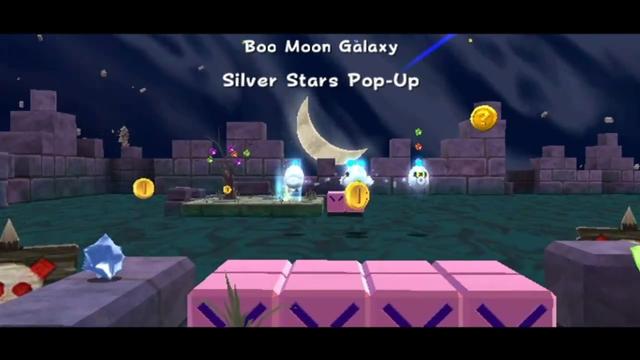
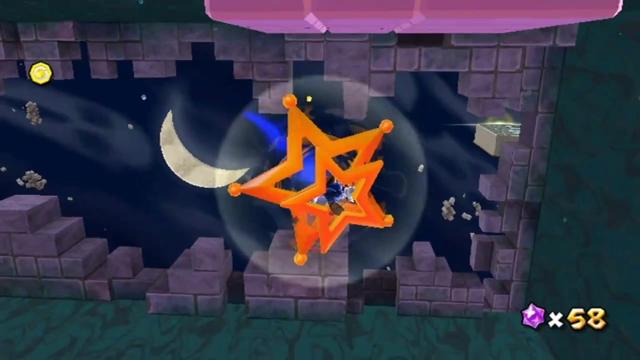
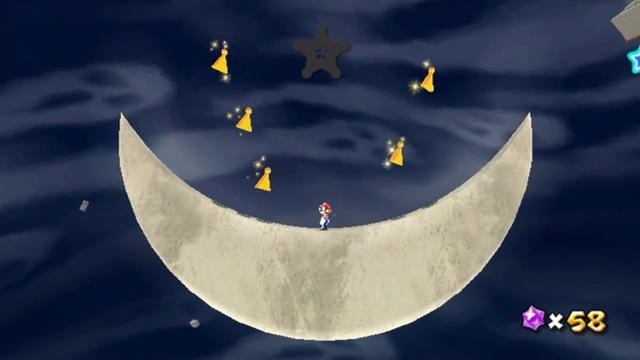
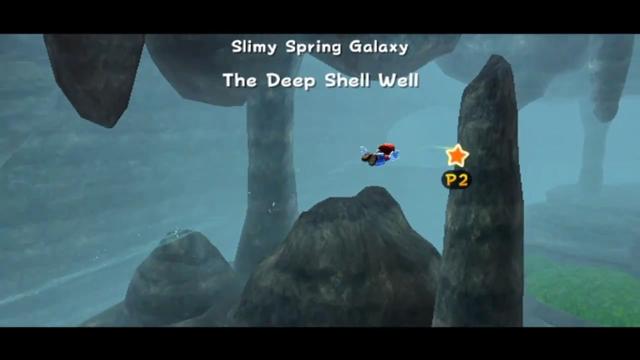
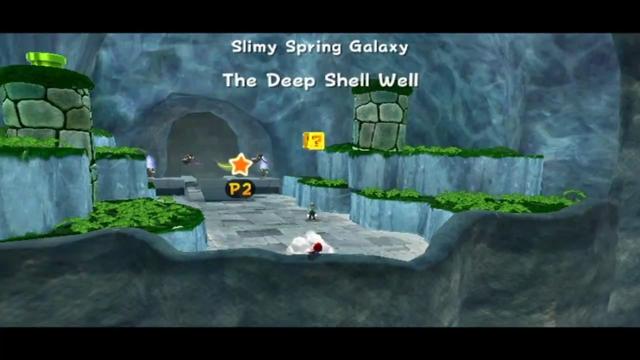
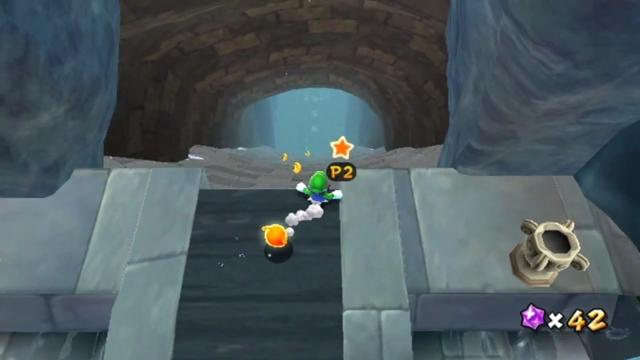
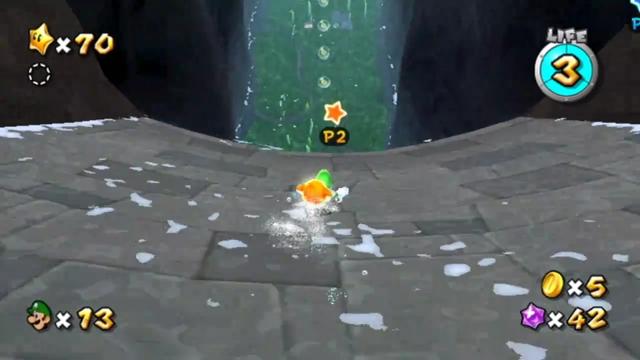
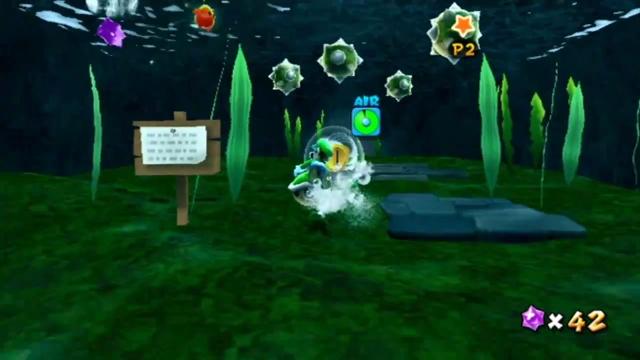
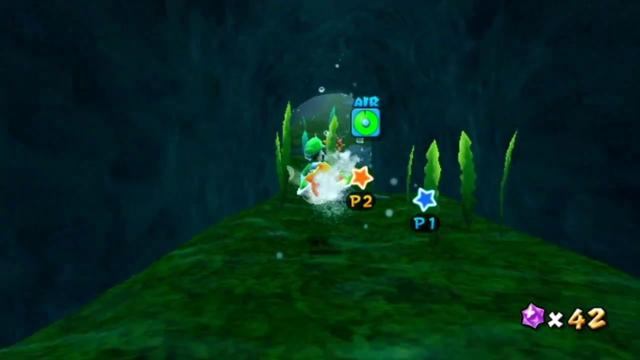
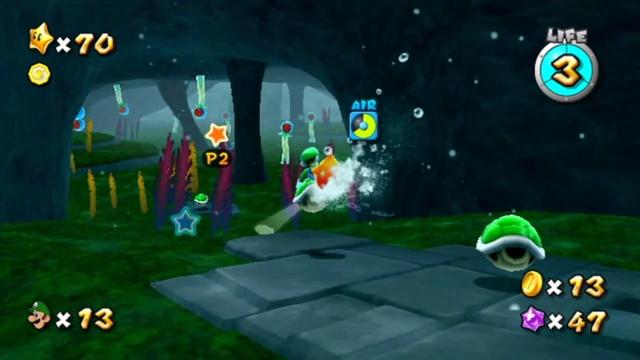
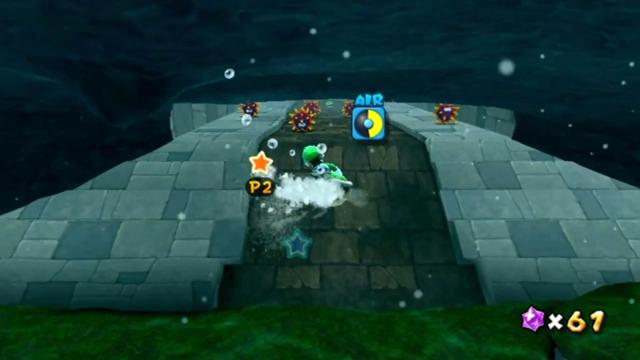
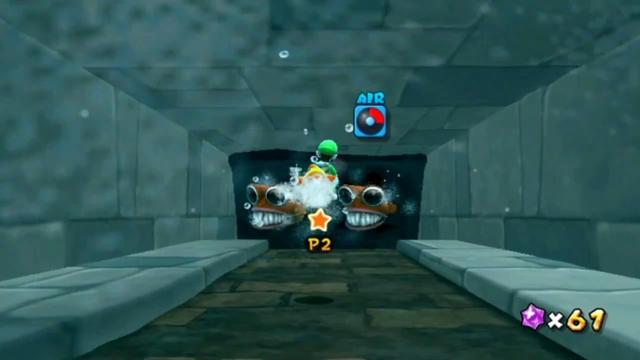
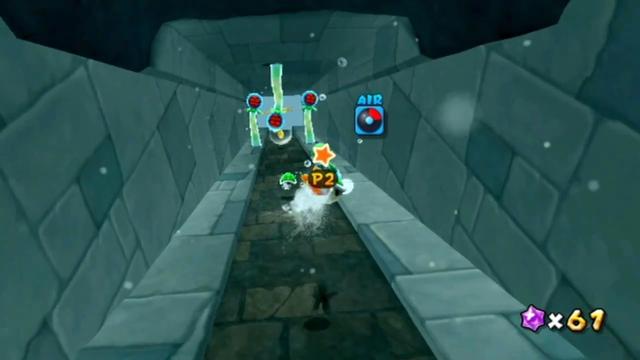

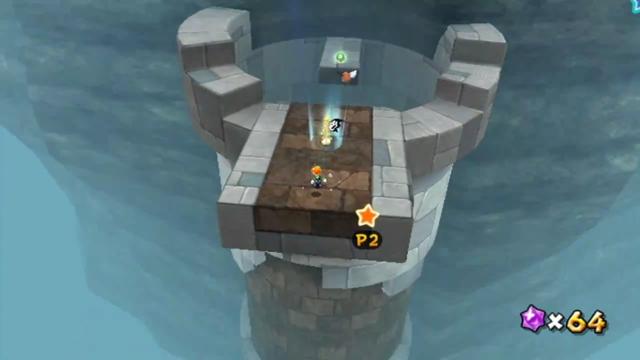
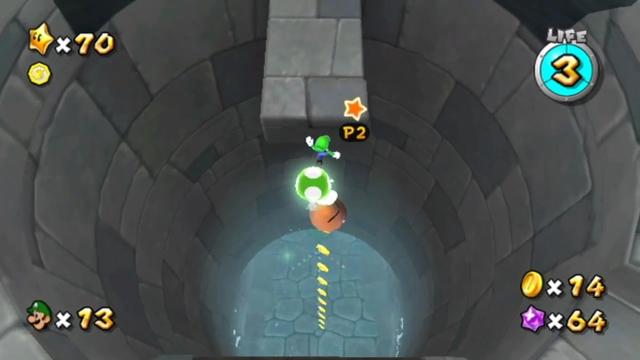
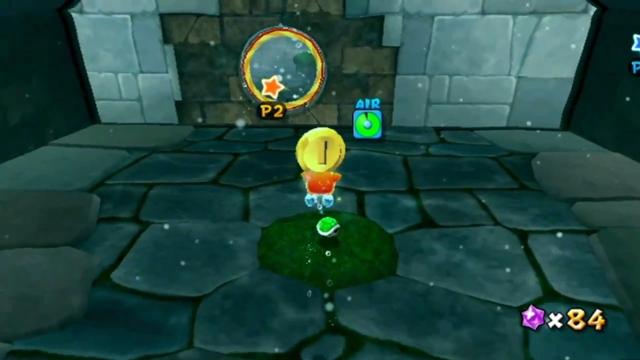

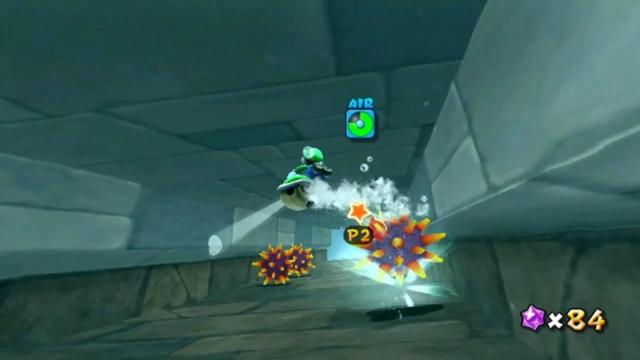
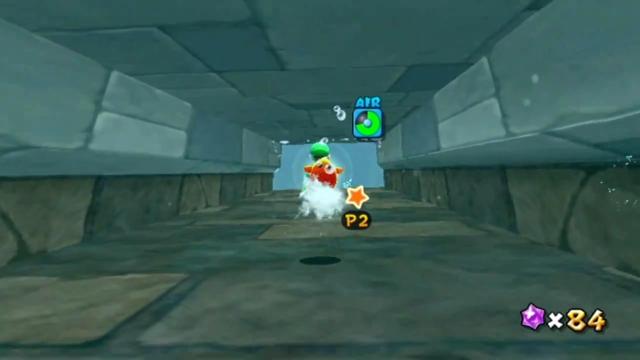
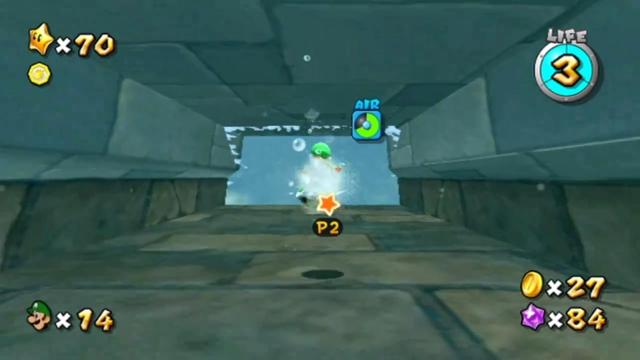
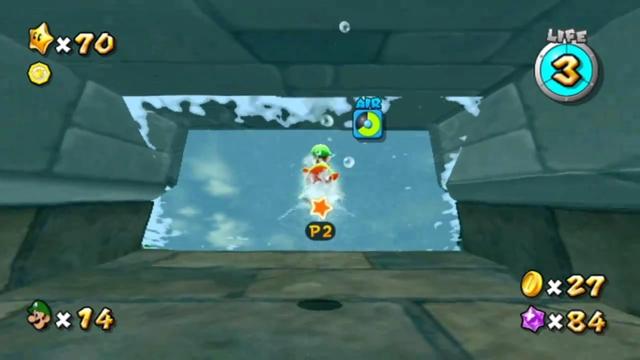

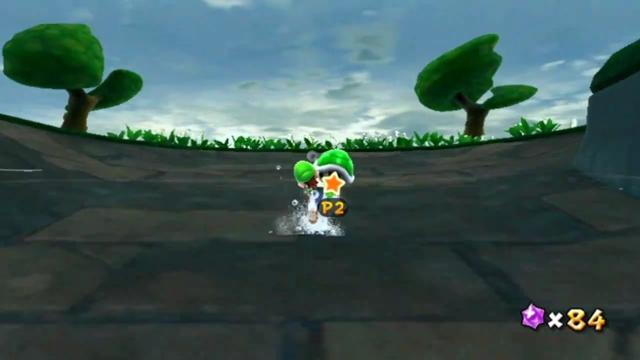

Post a Comment